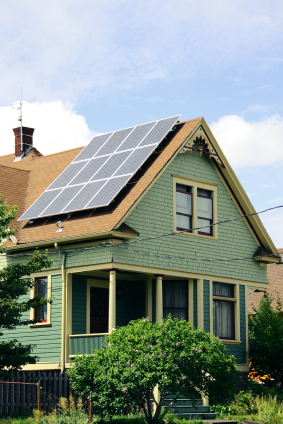Leveraging Natural Capital
Green neighborhoods offer a blueprint for development that works with natural systems to create value for the resident, the builder, and the community. Green building takes advantage of nature's efficiencies: harvesting sunlight and wind to create clean power, capturing rainwater to reduce demand on aquifers, and transforming waste from one activity into fuel for another. By designing with--rather than in spite of--natural systems, developers can offer a healthier, better quality living environment, reduce energy use and costs, and extend the life of the buildings and of municipal infrastructure.
Buildings: naturally powered and protected
Passive solar heating and cooling. The sun can supply light and heat if designers let it shine in and warm up tile floors and other objects that will slowly release that heat into the night. Energy modeling tools help orient the building and size and place windows to welcome the sun. They now also let architects work with the wind, allowing prevailing breezes to cool and ventilate a building. Residents can open the windows instead of turning on a fan or the air conditioning.
Tree in a forest. Awnings and window overhangs, landscaping and trees keep the hottest summer rays out and shields walls, windows, and doors from rain. Deciduous shade trees are natural shutters that open to let in the sun in winter. Evergreens will protect the building from cold winds. A green roof soaks up water and sunlight, keeping the building cool and extending the roof's life. Many homes already benefit from the Washington area's urban forest. Each tree lost to careless construction ends up costing thousands of dollars in air conditioning, water treatment, and air quality degradation.
Active renewables. Photovoltaic (PV) panels let the building itself soak up the sun and convert it to electricity. A solar hot water heater also plugs the building into the sun and is currently more cost-effective than PV panels. Washington, D.C.'s building height restrictions result in excellent access to the sun for larger buildings. Alternatively, a geothermal heat pump taps the earth's stable temperature to reduce heating and cooling costs. Geothermal systems should work well for most buildings in the D.C. area. Wind energy is another great alternative that many D.C. residents and businesses purchase through their electric utility. Unfortunately, poor wind resources in the D.C. metro area itself limit the effectiveness of wind turbines as an onsite option.
Green Neighborhoods
Green neighborhoods take sustainable design to the next level to create a place where people and natural systems can thrive together.
Green space central. Great neighborhoods are often defined by a stream, wooded area or park that defines a space and brings people together. When we design buildings and streetscapes around pockets parks and swaths of green, the neighborhood also gains safe, shady paths and gathering places. Reclaiming streams that were shunted into culverts and ditches lets kids and adults appreciate and play in nature and lets birds and other wildlife sing where only cars hummed before. Paths get people walking to the store and may allow some to abandon their car for a bicycle commute.
Soaking up storms. Stormwater runoff consistently overflows the sewers and pollutes the Washington area's rivers and creeks. Replacing pavement with parkland and turf with native plants allows rain to soak into the ground before it gets to sewers. Enhancing streams and wetlands directs runoff along natural topography, not down the pipes. These improvements prevent flooding and establish beautiful green spaces.
Neighborhood services. People and public spaces are the first elements of a green neighborhood, but the next level of sustainability connects resources flows to and from buildings. A community garden might become the start of a local composting effort, or a carpooling effort could ease commutes. On a larger scale, residential sewage might flow to a digester that would, in turn, provide power to the neighborhood.

Links
Clean Energy, Importance and Technologies Massachusetts Renewable Energy Trust
Resource Guide for Sustainable Development in an Urban Environment Urban Environmental Institute
Rainwater as a Resource TreePeople
Daylighting resources from the Lighting Research Center

